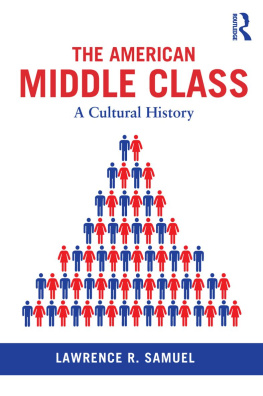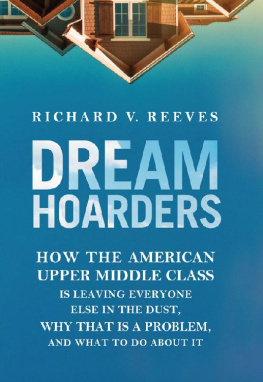Contents
List of Figures
Guide
Pagebreaks of the Print Version
Also byCHRISTOPHER BUSKIRK
Trump vs. the Leviathan
American Greatness: How Conservatism, Inc. Missed the 2016 Election and What the Establishment Needs to Learn (coauthor)
AMERICA AND THE ART OF THE POSSIBLE
RESTORING NATIONAL VITALITY IN AN AGE OF DECAY

CHRISTOPHER BUSKIRK
ENCOUNTER BOOKS  NEW YORK LONDON
NEW YORK LONDON

2023 by Christopher Buskirk
All rights reserved. No part of this publication may be reproduced, stored in a retrieval system, or transmitted, in any form or by any means, electronic, mechanical, photocopying, recording, or otherwise, without the prior written permission of Encounter Books, 900 Broadway, Suite 601, New York, New York, 10003.
First American edition published in 2023 by Encounter Books, an activity of Encounter for Culture and Education, Inc., a nonprofit, tax-exempt corporation.
Encounter Books website address: www.encounterbooks.com
Manufactured in the United States and printed on acid-free paper. The paper used in this publication meets the minimum requirements of ANSI/NISO Z39.481992
(R 1997) (Permanence of Paper).
FIRST AMERICAN EDITION
LIBRARY OF CONGRESS CATALOGING-IN-PUBLICATION DATA
Names: Buskirk, Chris, 1969 author.
Title: America and the art of the possible : restoring national vitality in an age of decay / Christopher Buskirk.
Description: First American edition. | New York, New York : Encounter Books, 2023. | Includes bibliographical references and index.
Identifiers: LCCN 2021002656 (print) | LCCN 2021002657 (ebook) | ISBN 9781641771740 (hardcover) | ISBN 9781641771757 (ebook)
Subjects: LCSH: Economic developmentUnited StatesHistory. | Economic developmentSociological aspects. | Income distributionUnited StatesHistory. | Elite (Social sciences)United States. | American Dream. | United StatesEconomic conditions1945
Classification: LCC HC106.5 .B86 2021 (print) | LCC HC106.5 (ebook) | DDC 330.973DC23
LC record available at https://lccn.loc.gov/2021002656
LC ebook record available at https://lccn.loc.gov/2021002657
1 2 3 4 5 6 7 8 9 20 22
This book is for Gina, my wife, the one I love, who makes me and my life better always better; for my children, who I pray will build upon what weve accomplished and will live their lives serving the Lord; and for the glory of Christ the King.
CONTENTS
INTRODUCTION
WHAT HAPPENS WHEN PROGRESS STOPS? THATS AN IMPORTANT question in a country whose self-understanding is deeply tied to the idea of progressmaterial, technological, political, and social. Americas first three centuries were characterized by physically pushing our border across the continent, west to the Pacific and then across nearly 2,500 miles of open ocean. It would not have been obvious to early Americans that Hawaii, a tropical archipelago far away from the California coast, would become the nations fiftieth state, joined in a political union with the far distant original states facing the Atlantic. At the same time the country was expanding in size, rapid progress was made in many other areas: science and technology extended the average life span, elevated living standards, and promoted social mobility and broad-based prosperity. Americans have come to expect the upward movement to continue: GDP will keep rising and science will make us healthier and wealthier, while political and cultural movements will make us better, happier people.
But progress has slowed or stalled or even reversed on various fronts in recent decades. Technology is still advancing, but primarily in the digital world. People get married later and have fewer children; life span stopped increasing and has actually declined in the past several years, even before the onset of Covid-19. It now takes two incomes to support a family of four in the middle class, whereas one income was sufficient as recently as the 1980s. Self-reported levels of happiness have dropped. Social trust is diminishing and the social consensus is badly frayed. Distrust of gatekeepers is widespread. The institutions responsible for protecting and advancing the interests of the nationpolitical, cultural, academichave failed in their core mission and have become self-interested to the point of being sociopathic. In short, America has not been moving in an upward trajectory.
The uncomfortable fact is that civilizational progress doesnt happen by a law of nature and is not guaranteed to continue indefinitely. Civilizations can rise, achieve greatness, and then fade, leaving behind evidence of impressive ingenuity. For example, the Antikythera mechanism, made two thousand years ago, has been described as the first analogue computer. Its a sophisticated device for astronomical calculation found in fragmentary form near the Greek island after which it is named. The Lycurgus cup, a Roman glass goblet from the fourth century, long mystified viewers with the way it changes color from pale, opaque green to bright, translucent red when it is lit from behind. The secret was revealed by electron microscopy in 1990, showing nanoparticles of silver and gold in the glass. The effect was reproduced first by traditional glassmakers and then with a 3D printer by Dutch researchers who published their method in 2019.
To the modern mind, it is disorienting to realize that earlier civilizations could have been just as prosperous, secure, and happy as our own and perhaps more so. But the trajectory of civilization is not constantly upward. Decline and decay are just as possible as progress. In fact, decay is the default: its what happens when you just do nothing. Samuel Huntington argued that every nation is in either a state of development or decline. This follows the classic understanding of national cycles. I would offer a modification that gets to the heart of the matter: there is an invisible force that drives development, which I call vitality.
The vitality of a nation can be judged in two ways: by the private life of its people and by the public life of the nation. In the private sphere, a nation is successful if the people are physically secure in their lives and their property; if families are being formed and are free, generally prosperous, and self-sustaining; and if those families produce at least enough children to maintain a stable population. That sounds simple, because it describes the basic conditions for personal independence, physical security, social continuity, and a general sense of well-being. Add to this a broadly accepted worldview supported by religious piety and practice and one has the conditions for a vital civilization. Rome and Athens had this. America used to have it too.
In the public sphere, civilizational vitality is shown in a capacity for collective action, which is rooted in what the fourteenth-century Arab philosopher Ibn Khaldun called asabiyya. This concept can be understood as social cohesion, national or civilizational purpose, a feeling of being in it together and for the same reasons. When








 NEW YORK LONDON
NEW YORK LONDON